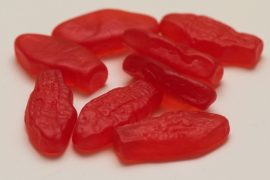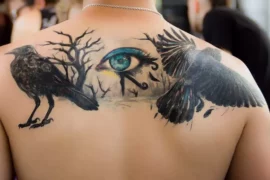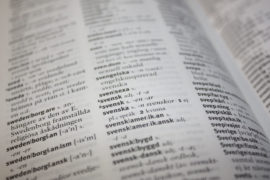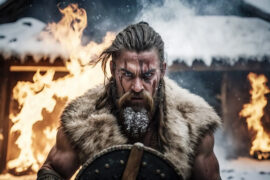When you hear the word “Viking”, you probably think of fierce warriors who raided and pillaged across Europe.
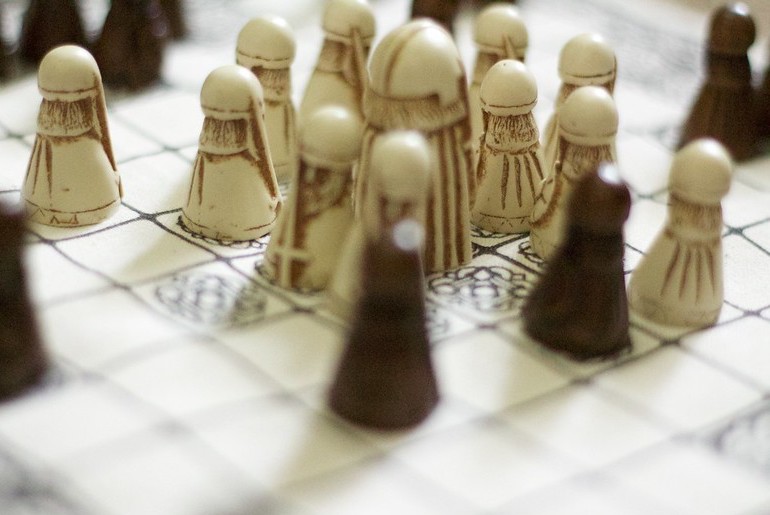
It’s not often that people associate Vikings with playing games. So it might surprise you to know that they played a version of chess for more than 1000 years.
These chess-like games were known as Tafl games and they were once popular in medieval Scandinavia.
Tafl games are sometimes known as Viking Chess, but they are quite different from regular chess (you know, the one with the black and white squares on the board).
Oh, and just to confuse things a little more: there is also a Swedish yard game called Kubb, which is also sometimes referred to as Viking Chess – but more on that one later!
So what is Viking Chess?
Tafl games (also known as Hnefatafl) are played on a square board with a grid of squares, and the goal is to capture your opponent’s pieces or get your king piece to safety.
The king piece is located in the centre of the board, and the other pieces are placed around it.
The game is played by moving pieces across the board and capturing the opponent’s piece by surrounding it on two sides.
Where does Viking Chess come from?
Viking Chess has a long history. It can be traced back to as early as the 4th century, although it gained popularity towards the end of the 8th century.
These games were played throughout the Viking era and remained popular throughout the Middle Ages.
Compared to regular chess, Viking Chess is relatively unknown. While the rules of regular chess have remained largely unchanged for hundreds of years, the rules of Hnefatafl have varied throughout history, and many different versions of the game exist.
Nonetheless, the game has remained a popular pastime for centuries, and it’s still played today by enthusiasts who appreciate its unique challenges.
Did Vikings really play chess?
There have been many archaeological finds related to Hnefatafl, providing insight into the game’s history and evolution.
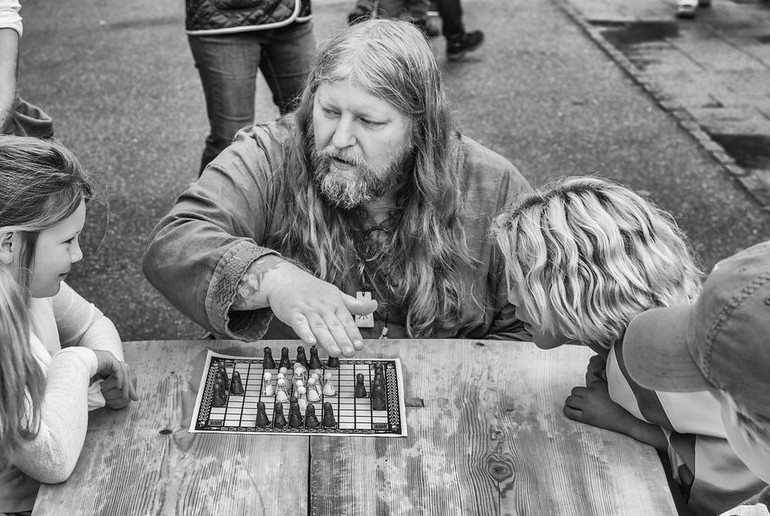
These discoveries have helped researchers and enthusiasts gain a deeper understanding of how the game was played, as well as its significance in Viking and medieval culture.
The 9th-century Gokstad ship game board is one of the most significant archaeological finds related to Hnefatafl.
Although the board itself lacks clear markings that would identify it as a Tafl board, its shape and dimensions suggest that it could have been used to play the game.
Another example is the Ballinderry board. Unlike the Gokstad ship board, the Ballinderry board is unmistakably Tafl.
It was discovered in Ireland in 1932 and features clear markings that indicate it was used to play Hnefatafl.
The discoveries of the Gokstad ship board and the Ballinderry board are significant because they provide tangible evidence of the game’s popularity among Vikings.
These finds support the view that Hnefatafl was a much-loved and widely played game during the Viking era and beyond.
Did the Vikings invent chess?
Vikings developed games that are similar to chess, but they didn’t invent chess itself.
Chess is believed to have originated in India around the 6th century, and it was then introduced to other cultures and regions, including the Islamic world and Europe.
While the Vikings certainly had an interest in games and strategy and may have adapted and developed their own unique board games, they did not invent the game of chess as we know it today.
The rules and gameplay of Hnefatafl
Game board layout
A Hnefetafl game board is a square with a grid of 11×11 squares, with the centre square being the throne of the king.

The king is placed in the centre of the board, surrounded by his defenders in a cross formation, with the attackers placed on the four sides of the board.
Pieces and movements
The game is played between two players: one playing the defenders, and the other playing the attackers. The objective of the game is for the attackers to capture the king, while the defenders aim to protect the king and help him escape.
The attacker gets to move first and then the two players alternate turns. Each piece moves like a rook in chess, horizontally or vertically, and captures the opposing pieces by surrounding them on two opposite sides.
The king is a special piece, and his movements are limited. He can only move one square in any direction, and he must be surrounded on all four sides to be captured.
However, the king can also capture the attackers by making a move that surrounds them on two opposite sides.
Objectives and basic strategies
The objective of the attackers is to capture the king by surrounding him on all four sides, while the defenders must protect the king and prevent him from being captured.
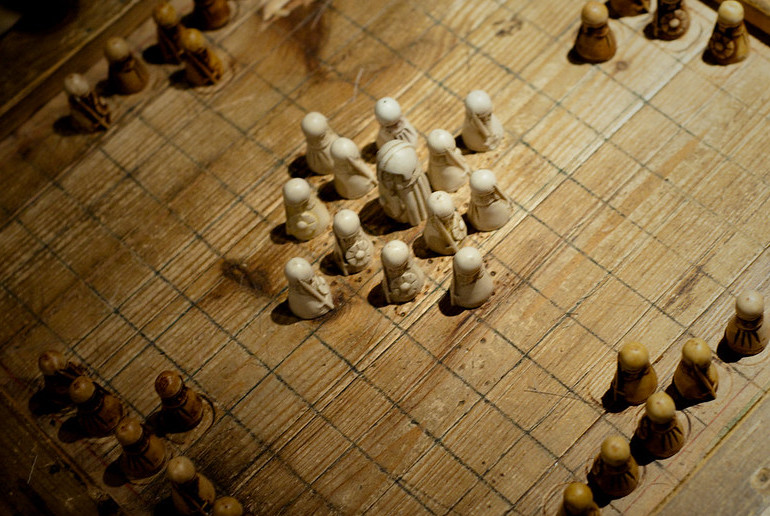
The basic strategy for the attackers is to coordinate their movements to surround the king, while the defenders must try to create a barrier around the king to prevent the attackers from getting to him.
Variations
There are several variations of Hnefatafl, with different board sizes and numbers of pieces. Some variations allow the king to escape to any edge square, while others require him to reach a specific corner square.
Ease of play
Hnefatafl may seem complicated at first, but once the basic rules and strategies are understood, it can be an enjoyable and challenging game.
It requires careful planning and strategic thinking, and can be played by people of all ages and skill levels.
How do you win at Viking Chess?
Whether you’re playing as the attackers or defenders, with a little strategy and some luck, you can win at Viking Chess. Here are some top tips to help you win.
Attackers
- Use your pieces to block the king’s escape routes.
- Try to create a trap to capture the king.
- Be aggressive with your attacks.
Defenders
- Focus on protecting the king.
- Use your pieces to block the attackers.
Both sides
- Avoid leaving your pieces vulnerable to being captured without having a plan for retaliation.
- Keep an eye on the entire board and not just your immediate moves.
The different versions of Viking Chess
When people refer to “Viking Chess,” they are usually referring to Hnefatafl, but there were actually many different versions of Tafl games played throughout the Viking era.
Alea evangelii
One such version of Tafl is Alea evangelii, also known as the “game of gospels”.
This game was played on a board consisting of 18×18 cells, and while the manuscript describes the board’s layout as a religious allegory, it is clear that it belongs to the Tafl family of games.
Tablut
Tablut is unique among Tafl games in that it was still played in the 18th century, and possibly even the late 19th century.
A 9×9 mat of embroidered reindeer skin was used to play the game, with the defending pieces known as “Swedes” and the attacking pieces as “Muscovites.”
However, the original rules have been subject to errors in translation, leading to confusion in attempts to reconstruct other historic Tafl games based on the Tablut rules.
Ard Rí
Ard Rí, meaning High King in Gaelic, is a Scottish tafl game played on a 7×7 board with one king and eight defenders against sixteen attackers. It is the least documented of all known Tafl variations.
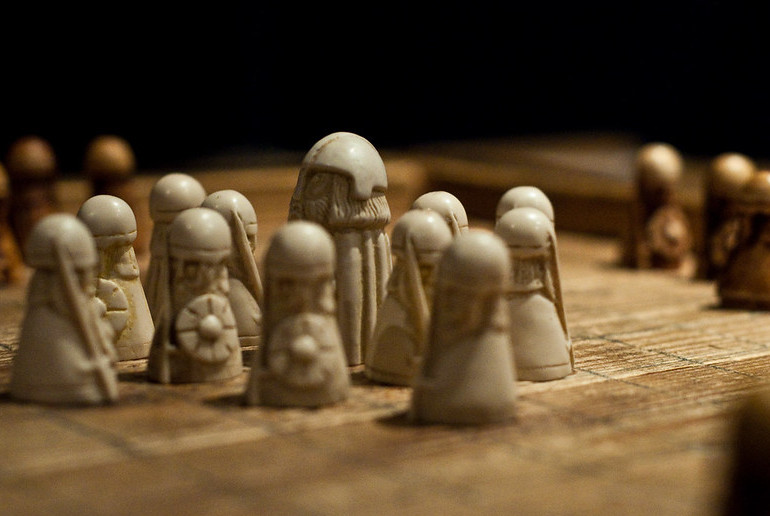
According to one commonly accepted rule, the king can escape to any edge square instead of just a corner square, which provides an unbeatable advantage to the defending side.
So this rule means that the king is always able to escape and the defender always wins!
Tawlbwrdd
Tawlbwrdd is a Welsh Tafl variant that features eight pieces on the king’s side and 16 on the attacker’s side. The rules of the game were derived from an incomplete account by Robert ap Ifan, along with a manuscript dating back to 1587.
To complete the game, Tablut rules were also incorporated. The Tawlbwrdd was played on an 11×11 board, with 12 pieces for the king’s side and 24 pieces for the opponent’s side.
Modern versions of Viking Chess
Modern versions of Hnefatafl have become increasingly popular in recent years. However, many of these versions are based on inaccurate translations of historical documents.

While traditional Hnefatafl sets can be difficult to find, modern versions of the game have become more readily available in recent years.
A quick search on Amazon will bring up a variety of Hnefatafl games to choose from, ranging from simple travel sets to more elaborate versions costing over $200.
So, whether you’re a seasoned player or just getting started, finding a Hnefatafl set to suit your needs has never been easier.
What is Kubb, and why is it called Viking Chess?
Kubb, also known as “throwing logs,” is an ancient Viking game that remains a popular pastime in Sweden.
Today, Kubb is enjoyed by families and students all over Sweden, particularly during midsummer and when the weather is warm enough to drink beer and barbecue in the park. (For more on the games played at Midsummer, see our Midsummer guide!)
Kubb has also gained popularity in other countries, with variations of the game being played in the United States, Germany, and other parts of Europe.
Each year, the Kubb World Championship is held in Gotland, Sweden, attracting players from all over the world.
How to play Kubb
First, let’s set up the playing field. You’ll need a flat, grassy playing area and some wooden blocks, or kubbs. Place five kubbs in a line at each end of the field, with the king standing tall in the middle.
Next, it’s time to get your batons. Each team gets six batons, and the game aims to knock down all the kubbs on the opposing team’s side, and then the king.
Teams take turns throwing batons, and the game can get seriously competitive! But don’t worry, it’s all good-natured fun.
To win, you need to use your batons wisely and strategically. Knock down the kubbs on the opponent’s side, but don’t forget to protect your own kubbs, too.
And if you’re wondering where to buy a Kubb set, fear not! You can find them on Amazon, such as this essential Kubb set. So grab some friends, head outside, and let the Kubb games begin!
See also:
Viking runes
Viking name generator
Viking tattoos and their inspirations

